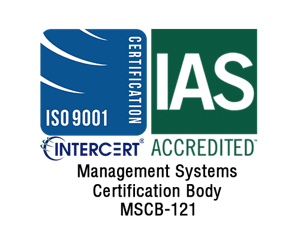Increased EMP Threats and Testing Standards
Part 1: Understanding the threat
Intentional electromagnetic interference (IEMI) threats to civilian and military equipment and infrastructure are constantly changing, demanding ever shifting standards for how these critical items can be tested against such threats.
Given the broad spectrum and scope of these threats, it can be a daunting task as a test engineer to understand and apply the necessary requirements. While the military and commercial test standards detail waveforms and environments, it is helpful to understand some of the potential sources and the complexities of the underlying threats that drive the requirements within these standards.
The electromagnetic threat environment can range anywhere from a high-powered microwave (HPM) device to the electromagnetic pulse (EMP) generated by a nuclear detonation. These threats can disrupt or disable electronic equipment, including destroying semiconductors within electronics. This in turn opens vulnerabilities in a company, organization, infrastructure, and even society. Here is a closer look at the categories of electromagnetic threats.
High-altitude Nuclear EMP
The term EMP is somewhat general and typically refers to a burst of electromagnetic radiation in the RF portion of the spectrum generated by a nuclear blast. It can be given even more specificity with the terms NEMP or HEMP. NEMP is again a more general term referring to the EMP generated by a nuclear detonation, while HEMP (high altitude nuclear EMP) refers to the EMP generated by a high-altitude nuclear burst interacting with the upper layers of the Earth’s atmosphere as well as the geomagnetic field.
An EMP generated by a high-altitude nuclear event (HEMP) covers a spectrum from almost DC to the hundreds of megahertz. The near instantaneous nature of a HEMP, paired with its vast range, results in extensive damage to electronic equipment over a very wide area, depending on the power of the nuclear device and altitude of the burst.
Ultra-Wideband Pulse Threats
In an ultra-wideband pulse threat, the radiated waveform for ultra-wideband (UWB) has an extremely fast rise-time in the tens to hundreds of picoseconds and can be either monopolar or bipolar. Extremely high-electric fields with high dV/dt products (fast rise-times) are considered a threat to electronic systems due to the fact that the high frequency content can penetrate small apertures, allowing the high electric fields to couple onto circuitry—either disrupting or destroying the target. Moreover, the extremely wide spectrum allows for multiple modes of coupling for a variety of target sizes.
In 1999, Air Force Research Labs (AFRL) completed and demonstrated an UWB system known as JOLT that was capable of generating record-breaking field strengths. More recently, foreign academic and defense-related laboratories have developed UWB systems with rise-times in the hundreds of picoseconds, and peak powers well into the gigawatts, making this a very real international threat.
Wideband Threats
Wideband (a.k.a. mesoband) sources produce a damped sinusoidal signal, resulting in a pbw >1%. These sources have become increasingly common as potential IEMI threats because of their extremely high radiated fields (>100 kV/m at 1m) and relative simplicity compared to HPM systems. Moreover, wideband sources strike a balance between a specific center frequency that can be designed to couple into a specific target, and the wide bandwidth required for coupling into a variety of targets. By covering more bandwidth, these threats provide an increased chance for greater disruption, yet, apart from a nuclear detonation, they are generally not powerful enough to destroy the system.
High Power Microwave (HPM)
An HPM device produces extremely high peak-powers (MW to GW) in narrow-band frequency ranges less than 1GHz. These sources are typically comprised of a pulsed power source driving a vacuum diode. HPM pulses cause either temporary or permanent effects on electronics within targeted systems at scalable effects. They are considered potential threats both because of their international availability and their potentially compact and directional nature—making them particularly useful as deployable weapons.
The nature of these threats led to the need for precise equipment and rigorous standards to test vulnerabilities. In our next post we will discuss the military testing standards as they relate to the threats.
Founded in 1998, Applied Physical Electronics L.C. (APELC) focuses our specialized generation of pulsed high-voltage and RF engineering expertise toward protecting against electromagnetic threats. Our unique understanding of the subject and standards, paired with extensive research and development, puts APELC on the forefront of affordable threat testing technology.

